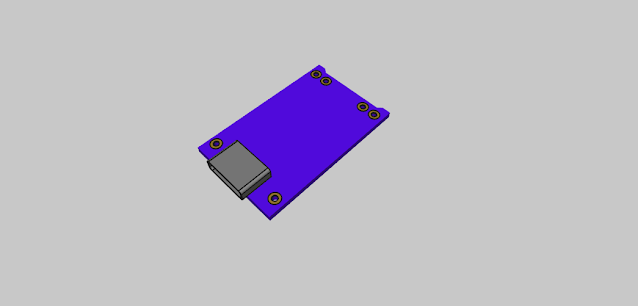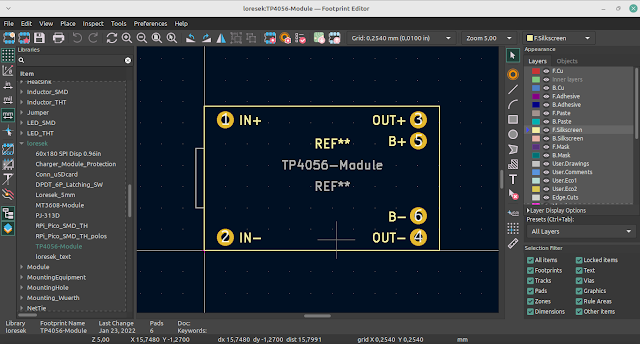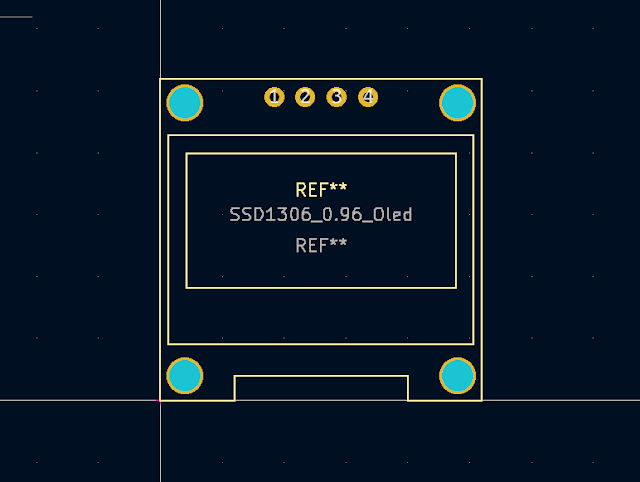KiCad Symbol and Footprint for the ESP32 Wemos D1 Mini
If you're working on a project using the ESP32 Mini, you’re in luck! This board is an ESP32-based clone of the popular Wemos D1 Mini, with more pins and more processing power, making it ideal for IoT applications and other electronics projects that need a bit more muscle. The GitHub repository by Besi, provides a handy KiCad symbol and footprint specifically tailored for this board, saving you tons of time and effort on custom PCB designs.
What’s in the Repository?
In this repository, you’ll find both the symbol and footprint needed to add the ESP32 Mini to your KiCad PCB design. Here’s a quick rundown of what each of these components offers:
- Symbol: The schematic symbol is designed to represent the ESP32 Mini accurately in your circuit diagrams. It includes all the pins, clearly labeled, to help you create accurate connections and understand the layout.
- Footprint: This is where the repository shines. The footprint for the ESP32 Mini fits perfectly on the PCB layout, allowing you to place it precisely without worrying about misalignments. It also includes drilled pads for all the pins, making soldering and assembly a breeze.
Features of the ESP32 Mini
The ESP32 Mini has a few unique features that make it stand out from the original Wemos D1 Mini:
- Increased Pin Count: With additional pins, you can connect more sensors, modules, and devices without needing extra components or multiplexer ICs.
- More Power: The ESP32 chip is a significant upgrade over the ESP8266, offering more processing power, which makes it a great choice for advanced IoT applications.
- Improved Connectivity: Like the Wemos D1 Mini, the ESP32 Mini includes WiFi, but it also supports Bluetooth, giving you more connectivity options.
Getting Started with KiCad for the ESP32 Mini
To start designing with this ESP32 Mini symbol and footprint, you’ll need KiCad, an open-source PCB design software. Here’s a quick guide to help you set things up:
- Download and Install KiCad: If you haven’t already, download KiCad from kicad.org.
- Clone the Repository: You can download the repository as a ZIP file from GitHub or clone it using Git. Just navigate to your KiCad project directory, open a terminal, and run:
- Add to Your KiCad Library: In KiCad, go to Preferences > Manage Symbol Libraries and Manage Footprint Libraries to add the ESP32 Mini symbol and footprint to your project libraries.
- Place and Design: Once added, you can place the ESP32 Mini symbol on your schematic and create connections with other components. Then, switch to the PCB layout editor and place the ESP32 Mini footprint on your board.
Why Use This Repository?
Creating custom symbols and footprints can be challenging, especially for complex modules like the ESP32 Mini. This repository provides a pre-made solution that is designed specifically for this board, ensuring:
- Time Savings: Skip the time-consuming task of creating your symbol and footprint from scratch.
- Accuracy: The symbol and footprint are optimized for the ESP32 Mini, reducing the risk of errors in your design.
- Compatibility: Designed for KiCad, this repository integrates seamlessly into your workflow, so you don’t need to convert or adapt files.
Potential Applications
The ESP32 Mini is well-suited for many types of projects. Here are a few ideas:
- Home Automation: With its increased pin count and Bluetooth/WiFi capabilities, the ESP32 Mini is a great choice for building smart home devices that connect to multiple sensors and modules.
- Robotics: The board’s additional power makes it ideal for robotics projects where you need to process multiple inputs and control motors.
- IoT Devices: The ESP32 Mini can handle data processing locally and connect to the cloud, making it a solid choice for IoT devices in various industries.
Conclusion
This KiCad library for the ESP32 Mini from besi/kicad-esp32-wemos-d1-mini is a fantastic resource for anyone building with this powerful board. It simplifies the PCB design process, helping you focus more on your project and less on setting up custom symbols and footprints. So, whether you’re new to PCB design or a seasoned designer looking to save time, this library is definitely worth checking out!











